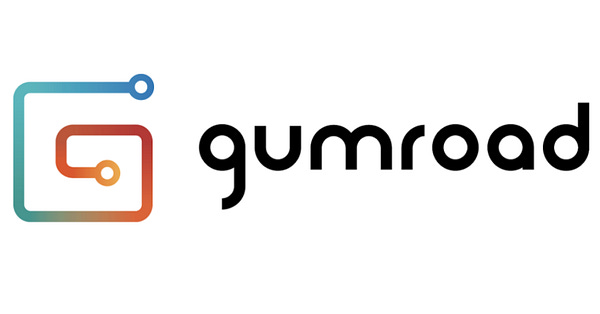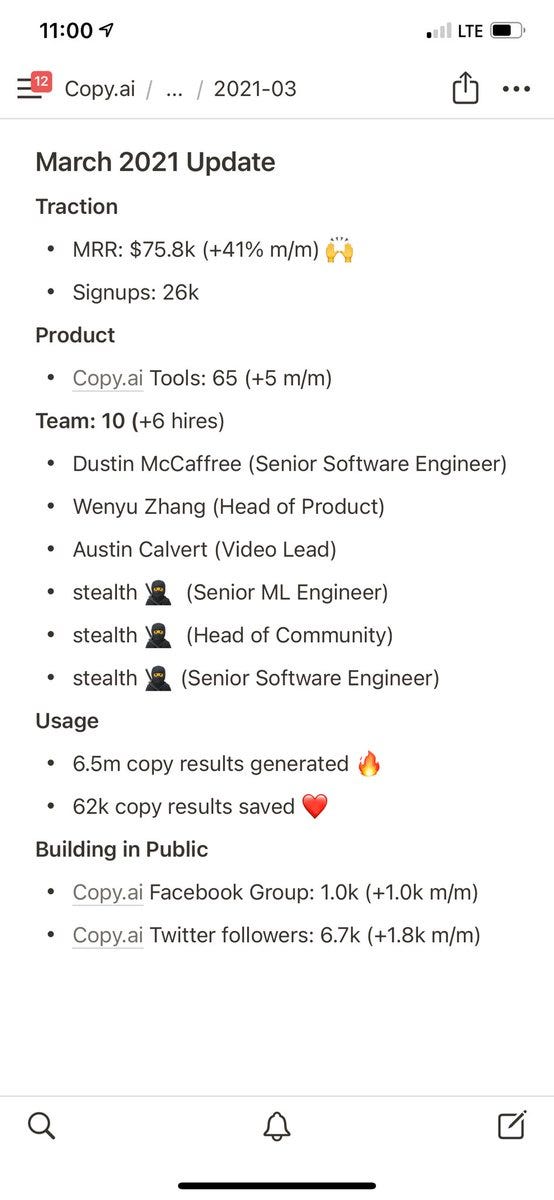It's Time to Build in Public
We're all building something. The next wave of category defining companies will be built in public
Individuals have never wielded more influence on the world. Of course, the ubiquity of influencers and creators has been steadily on the rise over the past decade, but there has never been more tools at the disposal of individuals to help build a following. Look no further than the platform I’m currently using to send out this blog post, Substack, which has enabled hundreds of talented writers to go off on their own.
Similarly, the emergence of TikTok, Clubhouse and NFTs, the increase in popularity of platforms like Patreon and the slew of creator based infrastructure companies that have recently been funded (Creative Juice, Karat, etc…), all point to one thing: the biggest brands of the future will be built around individuals, not corporations. And let’s not forget the “legacy” creator platforms: Facebook/Instagram, Twitter and Linkedin.
**Packy McCormick wrote a great post on this topic a few months ago that I highly recommend you read if what I just wrote didn’t hit home.**
This isn’t necessarily a new phenomenon. Back in 2008, Kevin Kelly wrote his seminal essay, 1,000 True Fans. While the surrounding infrastructure to reach your 1,000 true fans may not have existed in 2008, it sure does today. And especially in a post-pandemic world, people want to be inspired by other people, not by companies. Thus, the question that every company should be asking themselves is how to remain relevant in the creator age.
Building In Public
This is where building in public comes in. Building in Public (BiP), is a movement that advocates for transparency and knowledge sharing while working on your startup.

Leveraging platforms like Twitter*, companies that BiP share their investor updates, traction, company deliberations, product releases and more with the world. Doing this helps establish a deep relationship between companies and their customers/supporters due to the demonstration of trust and transparency involved. The caveat however, is that this information doesn’t come from a corporate twitter handle. Rather it comes straight from the fingertips of the founders themselves.
*Twitter is one of the most powerful platforms for distributing messaging and content. Perhaps the most famous entrepreneur in the world, Elon Musk, has changed the trajectory of companies based on his tweets, which led Matt Levine to develop the Elon Musk Markets Hypothesis. Musk is undoubtedly the Lebron of BiP. Twitter won’t work for every founder though, and is simply an example of an easily accessible distribution channel
Before going further, here are some great examples founders building in public:
Copy.ai founder Paul Yacoubian is the Luka Doncic of BiP
Sahil has been hosting Gumroad’s board meetings on Clubhouse for anyone to listen in


Josh conducted the seed round for his company, Maybe Finance, in public
The above examples vary in terms of the type of information disclosed, but they all demonstrate the nature of BiP.
Building a company has never been a private endeavour. Aside from the tens/hundreds/thousands of employees that are involved in actually building a company, customers, partners and investors also play a part in the creation of any successful company. Putting aside the fact that in most companies today, information in the above tweets is reserved solely for the C-level management and the board, shouldn’t potential employees, customers, partners and investors have access to this information as well?
This is the promise of Building in Public. By making company information easily accessible to anyone, and showing the willingness to be vulnerable, founders have the opportunity to reach their 1,000 true fans faster than ever before.
And in today’s world where technology isn’t enough, establishing yourself as a thought leader and conducting conversations with your future employees, customers, partners and investors isn’t a deliberation - it's a must.
BiP is for Everyone
On the surface, it might seem that only consumer businesses or bottoms-up B2B businesses fit the criteria for being a BiP candidate. But do not forget that behind every B2B customer sits an individual person (sometimes multiple people), looking to be inspired by other people. Maybe reaching them requires being creative on platforms GitHub, StackOverflow or Linkedin as opposed to Twitter, but I truly believe that every company today should be building in public in some fashion.
In 2021, founders are the ones who establish their company’s brand. And the onus is on each and every founder to find their voice, project that voice, and help build a community around it.
Eating My Own Dog Food
So how should founders get started with BiP? Well, I’m honestly not sure, but the prevailing wisdom seems akin to Nike’s slogan. A quick word of advice to Israeli founders - make sure you have a twitter account and start sharing your journey with the rest of us. Perhaps you should start your own Substack like I did a few months ago.
BiP is a process - it will take time to build a following and a community. But the long term rewards are worth the trial and error. And lest you think that I’m getting off easy, we are all building something. Personally, I’m building myself towards becoming a practically helpful resource for founders, an identifier of stellar investment opportunities and a positive contributor to Israel’s economy. So I plan on sharing my journey in public as well. Beyond this Substack, you can find my tweets here.
If you’re interested in joining me on the journey towards building in public, please feel free to reach out. I’m not sure I have the answers to your questions, but maybe together we can figure it out. After all, accomplishing things together is really the point of it all.







Bullish!!!